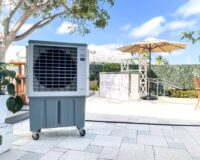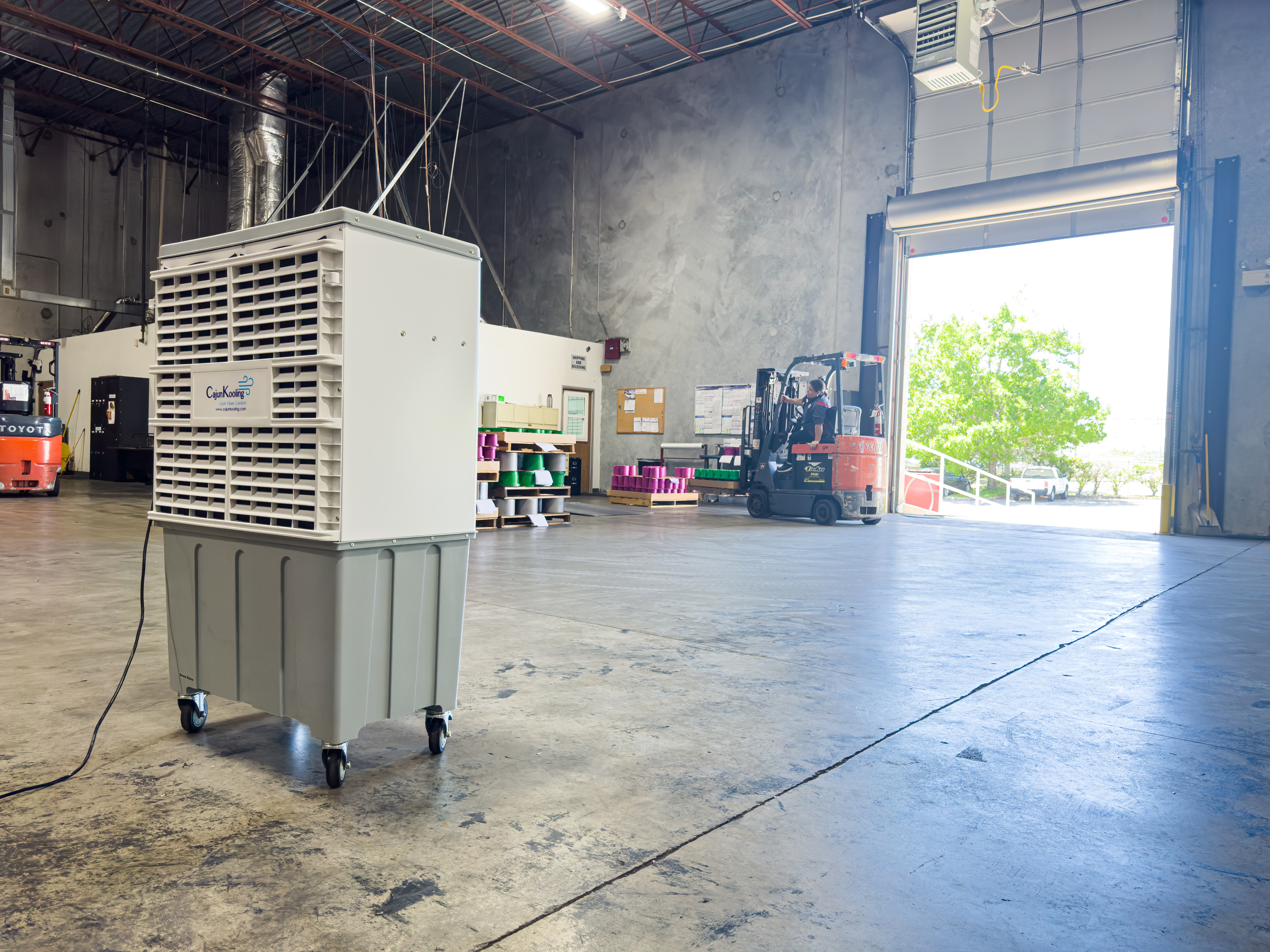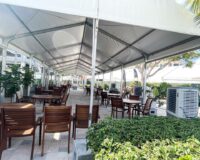10 Signs You Need To Replace Your Swamp Cooler
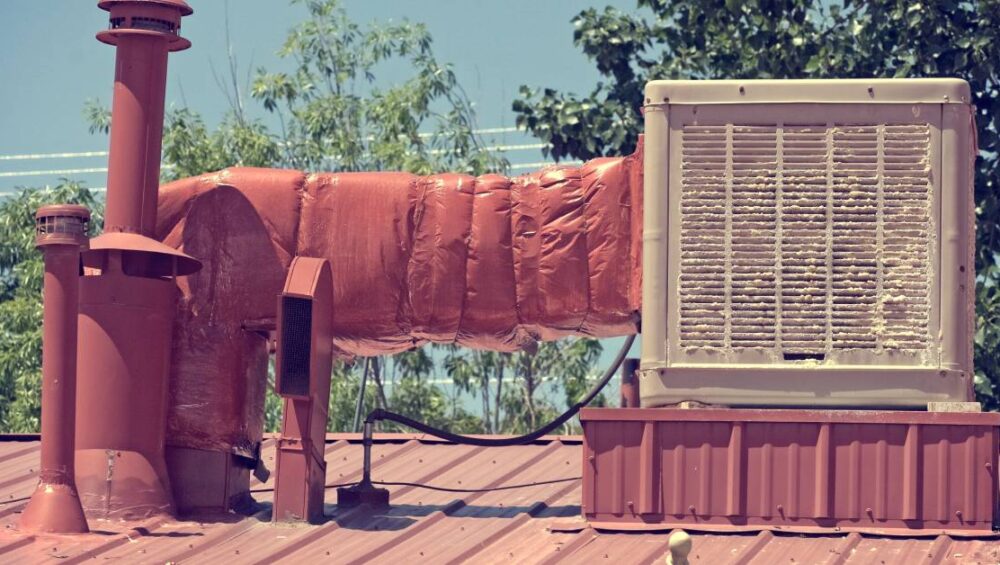
Swamp coolers, also known as evaporative coolers, are a popular choice for those living in dry climates. These coolers offer an energy-efficient way to keep indoor spaces comfortable by using the natural process of evaporation.
While swamp coolers can be a cost-effective alternative to traditional air conditioning, they don’t last forever. In this post, we’ll explore the 10 signs you need to replace your swamp cooler.
What Is a Swamp Cooler?
Portable swamp coolers are a staple in many locations due to their simple yet effective cooling. Unlike conventional air conditioners, which use refrigerants to cool the air, swamp coolers rely on evaporation. When dry air passes over water, the air absorbs moisture, causing the temperature to drop. This process cools the air and adds a bit of humidity, making swamp coolers perfect for dry regions.
The main components of a swamp cooler are the fan, water pads, and a pump. The pump circulates water onto the pads, and the fan pulls outside air through them. This straightforward design makes swamp coolers easier to maintain than some other cooling systems. However, like any appliance, these coolers have a lifespan, often showing signs of wear and tear over time.
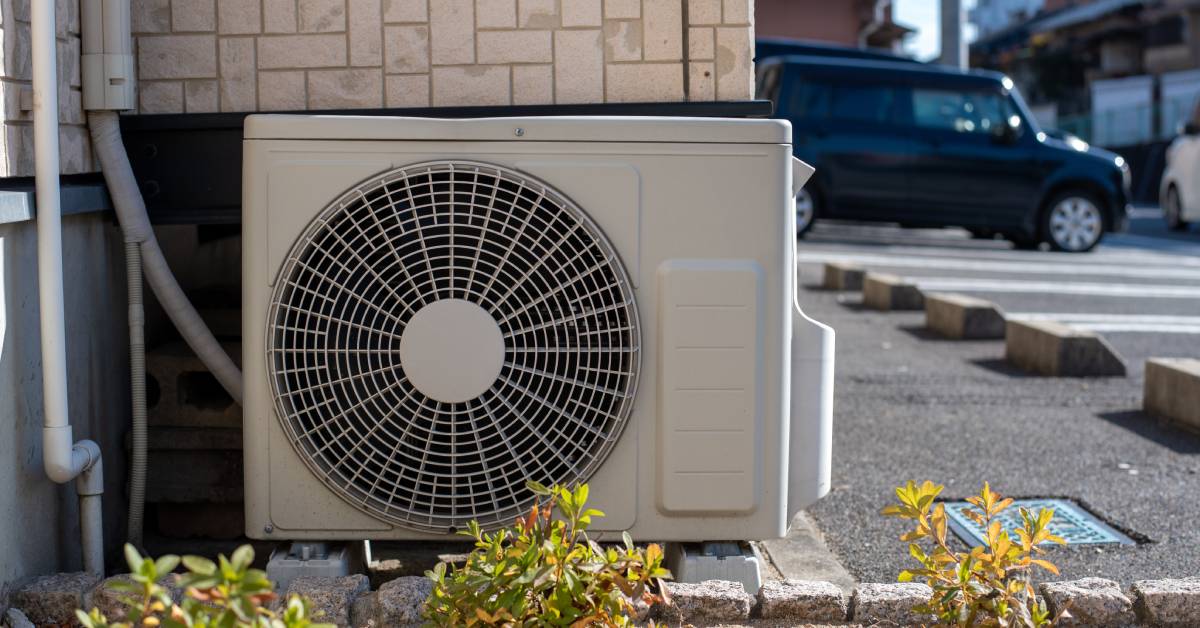
10 Signs of a Failing Swamp Cooler
Understanding how your swamp cooler works is the first step in recognizing when it’s time for a replacement. Review this list to gauge whether you need an upgrade.
1. Reduced Cooling Efficiency
One of the most noticeable signs of a failing swamp cooler is reduced cooling efficiency. If your unit used to cool the space well but now struggles to maintain comfortable temperatures, it could be a sign that something is wrong. This drop in performance could be due to several factors, such as clogged filters, malfunctioning pumps, or worn pads.
2. Strange Noises
Swamp coolers usually operate quietly, so any new or unusual noises should raise a red flag. Grinding, squeaking, or rattling sounds could indicate mechanical issues like a failing motor or fan belt. Ignoring these noises can lead to bigger problems later.
3. Unusual Odors
If you notice musty or foul smells coming from your swamp cooler, it might be time for a replacement. These odors often result from mold or bacterial growth inside the unit, particularly if it hasn’t been regularly cleaned. Not only are these smells unpleasant, but they also affect indoor air quality.
4. Excessive Water Leakage
Swamp coolers are designed to use water efficiently, so excessive leaks are a clear indicator that something is amiss. Cracks in the water reservoir, faulty seals, or issues with the water pump can cause leaks. Ignoring leaks can lead to water damage and higher utility bills.
5. Frequent Repairs
If you find yourself frequently calling a technician to fix your swamp cooler, it might be more cost-effective to replace it altogether. While some repairs are expected over a unit’s lifespan, consistently needing repairs can be a sign that your cooler is nearing the end of its life.
6. Increased Energy Bills
A malfunctioning swamp cooler can cause your energy bills to spike. If you notice a significant increase in your electricity costs without a change in usage, your swamp cooler might be the culprit. Older units tend to be less energy-efficient, especially if they’re not functioning correctly.
7. Rust or Corrosion
Take a close look at your swamp cooler. If you notice rust or corrosion on any of its parts, it’s a sign that the unit has been exposed to excessive moisture and wear. Rust can affect the performance and longevity of your cooler, indicating that a replacement is necessary.
8. Inconsistent Airflow
If the airflow from your swamp cooler feels weak or uneven, it could be a sign of a failing unit. Blocked vents, a damaged fan, or worn-out pads can all contribute to inconsistent airflow. Proper airflow is crucial for efficient cooling, making this a sign that shouldn’t be ignored.
9. Aging Unit
Like all appliances, swamp coolers have a finite lifespan. If your unit is 10 to 15 years old, it may be time to consider a replacement. Older units are more prone to breakdowns and may not provide the same level of efficiency as newer models.
10. Difficulty Turning On or Off
If your swamp cooler struggles to turn on or off, it could be experiencing electrical issues. These problems can stem from a faulty switch, wiring, or motor. Ignoring electrical issues can pose safety risks, so addressing problems promptly is essential.
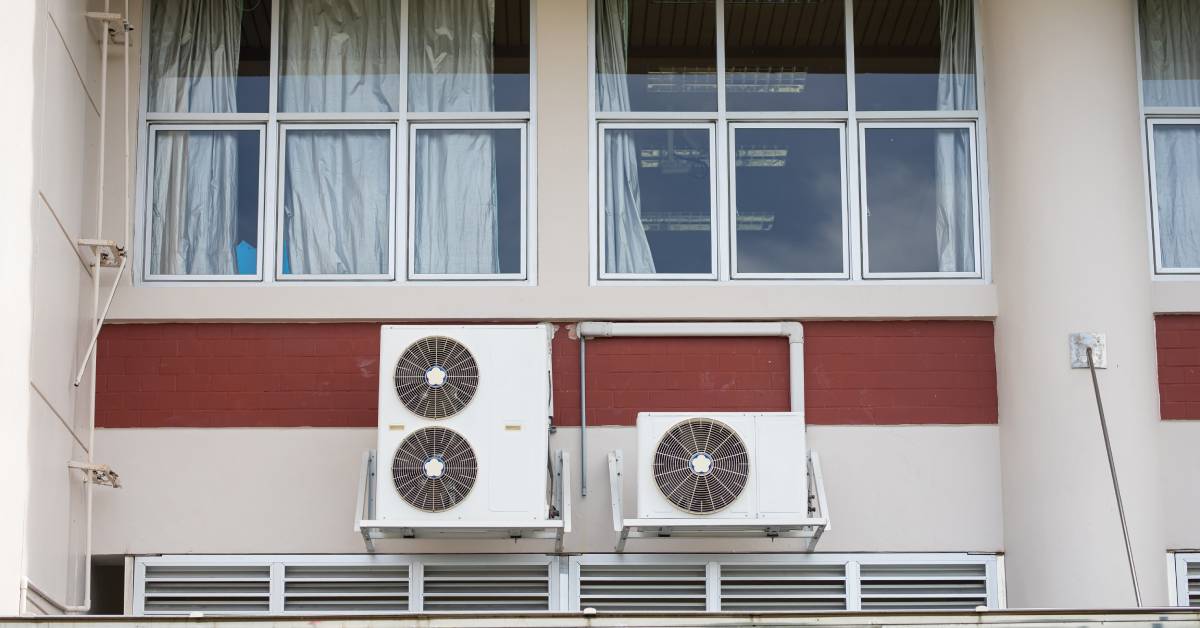
Comparing Portable Versus Built-In Evaporative Coolers
Of course, there are many ways to enjoy the benefits of coolers. Here’s a breakdown of the key differences between portable and built-in evaporative coolers:
Pros of Built-In Evaporative Coolers
- Whole-home coverage: Built-in systems are designed to cool larger areas, making them a good option for those seeking to cool an entire house.
- Out of sight: Since these units are installed outside or on your roof, they remain out of sight and don’t take up valuable living space.
- Efficient for large spaces: For massive homes or industrial spaces, built-in systems might work better than smaller models.
Cons of Built-In Evaporative Coolers
- High installation costs: One of the biggest drawbacks of built-in units is the upfront cost, which includes professional installation and potential modifications to your home.
- Permanent installation: These systems are not portable, and once installed, they cannot be moved if you change your mind or relocate to another property.
- Maintenance challenges: Built-in systems often require specialized maintenance, such as cleaning ducts or repairing components on your roof.
- Limited use in small spaces: For apartments, condos, or single rooms, these coolers are overkill and unnecessarily expensive.
Pros of Portable Evaporative Coolers
- Affordability: Portable units cost a fraction of what built-in systems do, making them a budget-friendly choice.
- No installation hassles: Say goodbye to professional installers and complicated setups. Just plug in your portable evaporative cooler, add water, and you’re good to go.
- Mobility: Whether you need cool air in your living room one day or your bedroom the next, portable units can be moved with ease. Some even come with caster wheels.
- Lower maintenance: Without ducts, roof installations, or specialized components, portable coolers are easier to clean and maintain. Most only require periodic cleaning and refilling the water tank.
Cons of Portable Evaporative Coolers
- Coverage concerns: You’ll need to find the ideal location to maximize coverage offered by your unit.
- Requires floor space: Unlike built-in units, portable coolers occupy floor space, which might be a concern in very small rooms.
While both have their merits, portable evaporative coolers consistently offer a better combination of affordability, flexibility, and low-maintenance cooling.
Take Control of Your Home Environment
Recognizing the 10 signs you need to replace your failing swamp cooler is essential for maintaining a comfortable, efficient environment. By staying vigilant for indicators such as reduced cooling efficiency, strange noises, and unusual odors, you can take proactive steps to address potential issues before they escalate.
Timely replacement of your swamp cooler offers numerous benefits, including improved energy efficiency, enhanced indoor air quality, and uninterrupted comfort. When selecting a new outdoor evaporative cooler, prioritizing the correct setup ensures optimal performance and longevity. With Cajun Kooling as your partner, you’re well-equipped to make the best choices for your home cooling needs.


